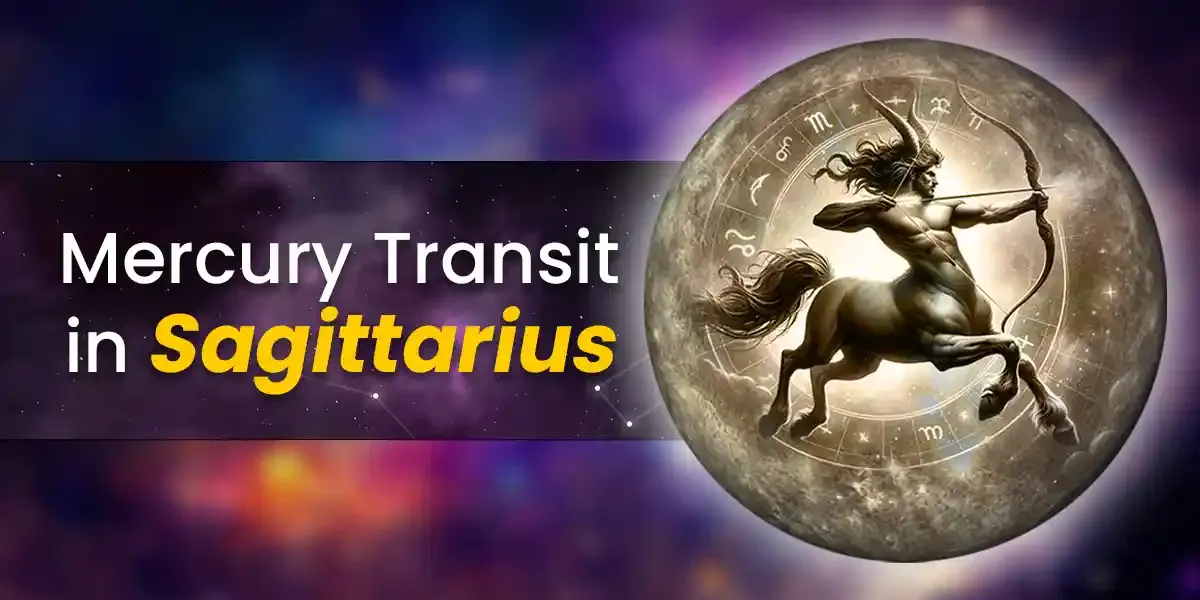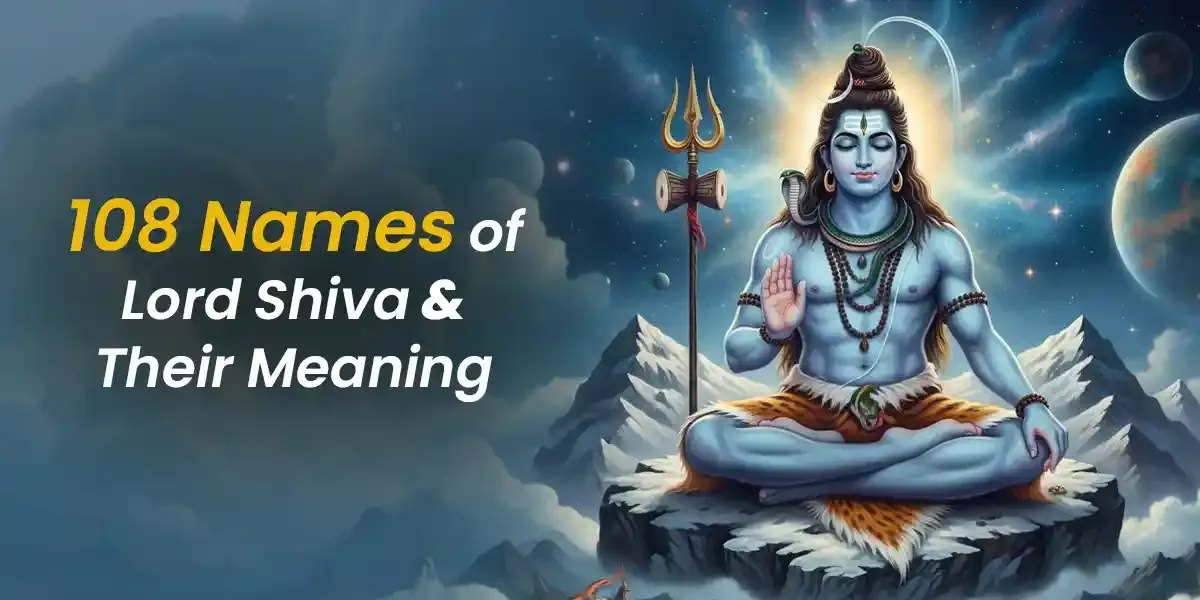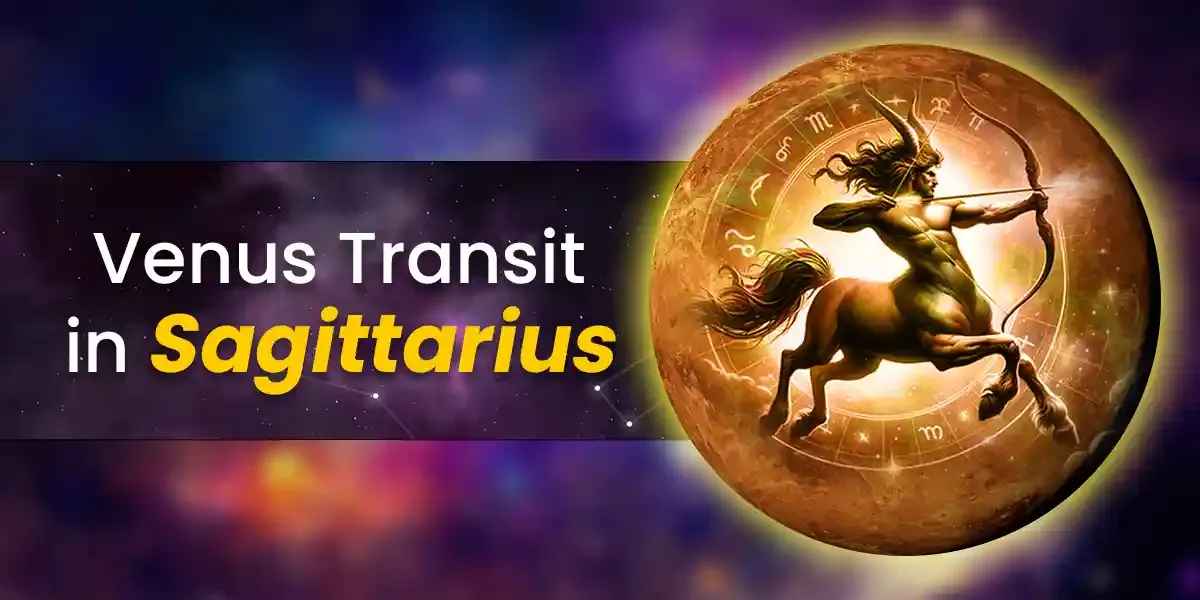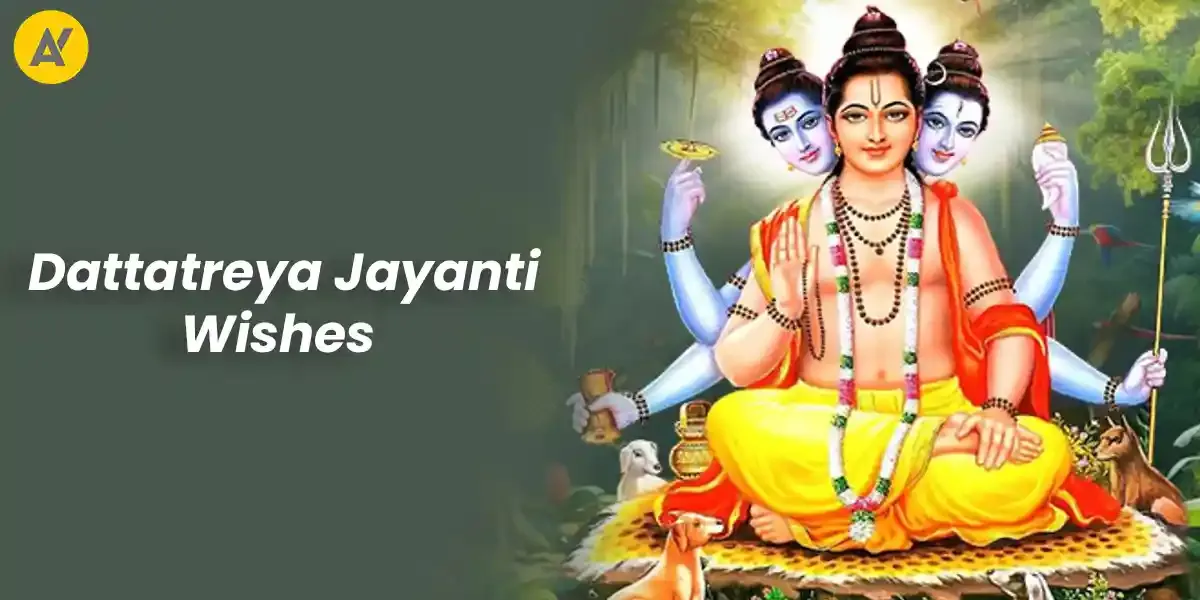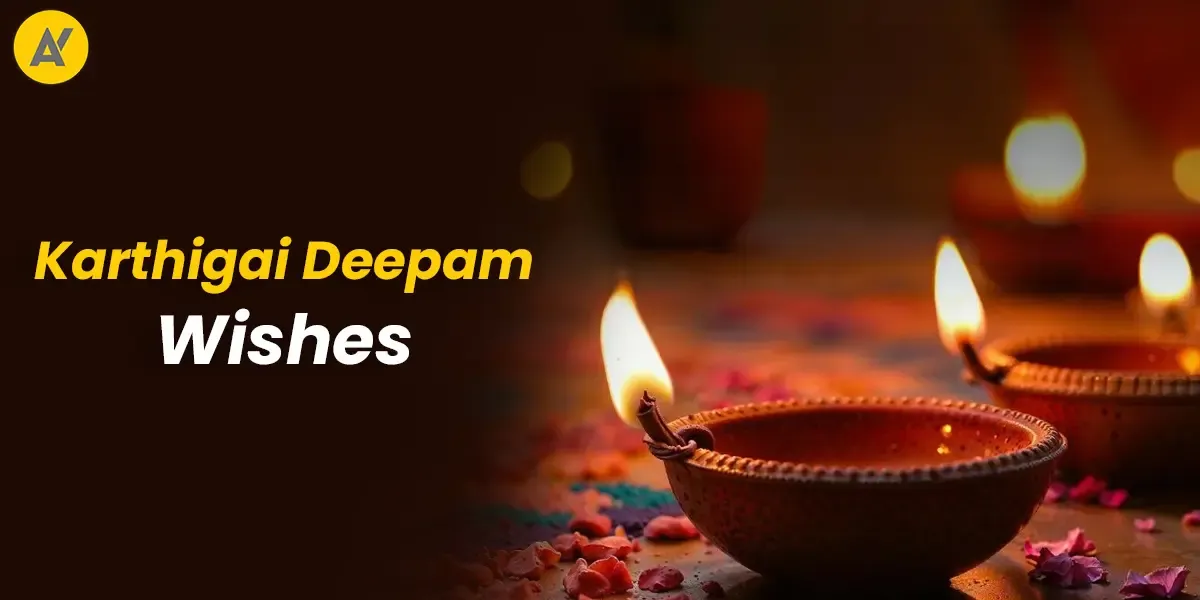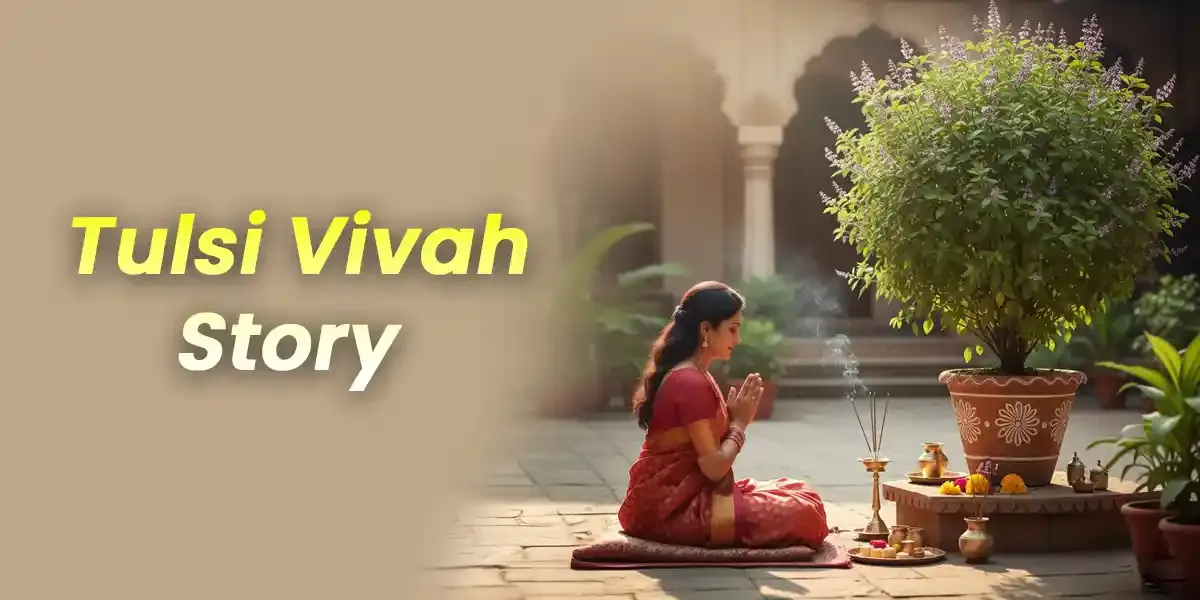
Tulsi Vivah is a beautiful Hindu tradition that celebrates the sacred marriage between Lord Krishna and the holy Tulsi plant. This annual ceremony is a story of devotion, divine promises, and spiritual transformation that has touched millions of hearts across generations.
Rooted in an ancient tale of love and cosmic balance, Tulsi Vivah reminds us of the power of faith and the eternal bond between the divine and the devoted.
Every great tradition has a story that gives it meaning. Let's explore how Tulsi's sacred marriage to Lord Krishna came to be celebrated each year.
The Legend Behind the Tulsi Vivah Story
Every great tradition has a story that gives it meaning. The tale of Tulsi Vivah transports us back to ancient times, when gods and demons roamed the earth, and when devotion held the power to protect even the mightiest of beings.
Demon Jalandhar and Vrinda's Sacred Virtue
In past ages, there existed a mighty demon named Jalandhar, whose power seemed insurmountable. The gods themselves trembled before his strength. Yet this demon possessed an invisible and impenetrable shield, that is, his wife, Vrinda.
Vrinda was a woman of unwavering devotion. Her purity was so complete and steadfast that it created a divine protection around Jalandhar, rendering him invincible.
No celestial weapon could harm him, no god could defeat him. This is because of his wife's sacred faithfulness. Her devotion was so powerful that it became stronger than any divine force.
Desperate and troubled, the celestial gods approached Lord Krishna with their pleas.
They said, "O Supreme Lord, the demon Jalandhar grows ever more powerful and dangerous. His wife Vrinda's purity protects him with a shield that cannot be broken. We humbly seek your divine wisdom. How can we overcome this growing darkness and restore balance to creation?"
Krishna's Compassionate Intervention
With infinite compassion for all beings, Krishna understood the gravity of the situation. He recognized that only through breaking Vrinda's sacred vow could the protective shield be removed and righteousness be restored. This was a difficult choice, but necessary for the greater good.
While Jalandhar was away, Krishna deceptively approached Vrinda. Through His divine power, He interacted with her as would a husband, causing her vow of chastity to be broken. The moment her sacred vow shattered, the magical protection around Jalandhar crumbled like dust. The gods, now able to act, defeated the demon and restored balance to the cosmos.
Vrinda's Heartbreak and Her Divine Curse
When Vrinda learned the truth, that her husband had been killed and that the Lord Himself had deceived her, her heart shattered. She had lost everything: her husband, her honor, and her sacred vow. In her profound anguish and righteous anger, she cursed Lord Krishna with words of power and pain.
"You have deceived me!" she cried out.
"You have destroyed my sacred promise and my devotion!
My beloved husband lies dead because of your deception, and I have become a widow.
I curse You to become stone—lifeless and immobile, just as my heart has become!" (This curse is why Lord Krishna is worshiped in the form of sacred Shaligram stones, which are believed to be his manifestation.
But then Vrinda, moved by a deeper wisdom and consciousness, added another condition to her curse.
"Since you have wronged me so grievously, you must marry me," she declared. "You must set right what you have broken!"
The Divine Promise and Transformation
Lord Krishna, bound by truth and eternal dharma, accepted her words with grace and compassion.
He replied, "Your words are just and true. I accept your condition completely. I shall marry you, but in your next birth."
Vrinda, through the blessings of Krishna's divine promise, was reborn in her next life as the sacred Tulsi plant. And true to his eternal word, Lord Krishna fulfills his promise each year during Tulsi Vivah, celebrating his divine marriage with Tulsi.
Tulsi Vivah Rituals and Traditions
The Tulsi Vivah ceremony beautifully recreates this divine wedding by following these timeless rituals, allowing devotees to participate in this sacred union.
Adorning and Purifying Tulsi
The Tulsi plant is adorned with flowers, jewelry, and vermillion, then bathed with sacred water before the divine wedding ritual.
The Marriage Ritual
A symbolic wedding is performed with mantras, following traditional Hindu marriage rituals between Tulsi and an idol or Shaligram of Lord Krishna.
Prayers and Sacred Offerings
Devotees offer sweets, fruits, flowers, and chant prayers seeking blessings for marital harmony and prosperity.
Distributing Holy Prasad
The blessed offerings are distributed among family and community members, spreading divine grace.
These rituals mark the beginning of the Hindu wedding season and are believed to bring blessings to those seeking marriage or marital happiness.
Want to know the most auspicious time for your wedding or seeking guidance on marital harmony? Talk to an astrologer on Astroyogi today.
Conclusion
The story of Tulsi Vivah reminds us that devotion, even when tested, never goes unrewarded.
Vrinda's unwavering faith transformed her into the sacred Tulsi plant, forever honored in Hindu households.
Lord Krishna's promise, kept through eternity, teaches us about divine commitment and the power of truth. As we celebrate Tulsi Vivah each year, we honor an eternal bond between devotion and divinity—a bond that continues to bless and inspire us all.
Our in-house team of writers comprises of vibrant, like-minded, and curious souls who are passionate about helping people find joy and motivation through the magic of words. Our writers are keen on using their skills to make the study of divination sciences a guiding tool in people's lives. They hold expertise in writing on a myriad of topics related to Indian Astrology, Spirituality, Planetary Movements, Vastu Shastra, Numerology, and Tarot among several others. The Astroyogi team aims to write articles that can help the readers lead a life of peace and tranquility whilst enjoying the many ups and downs of life!

























